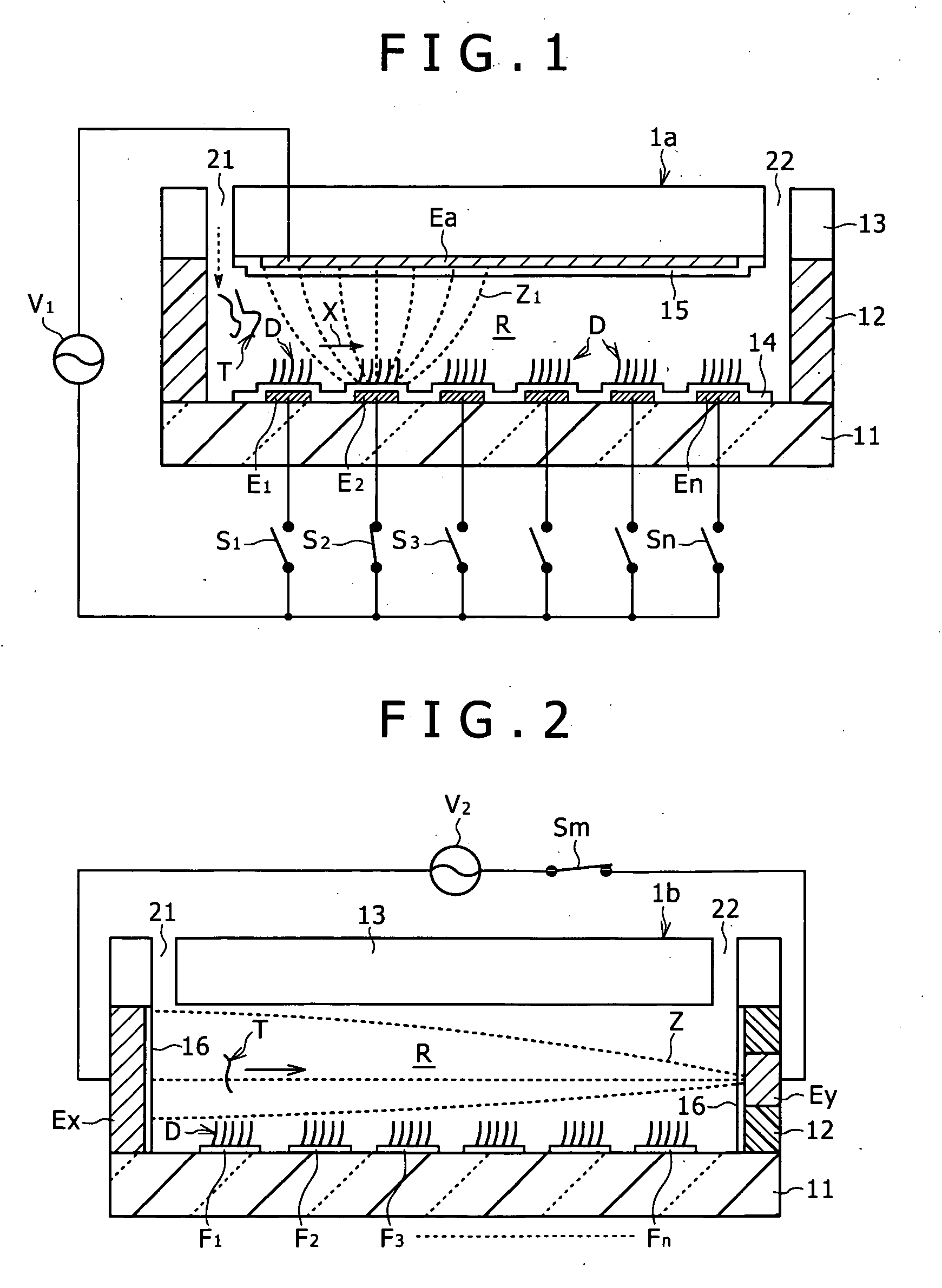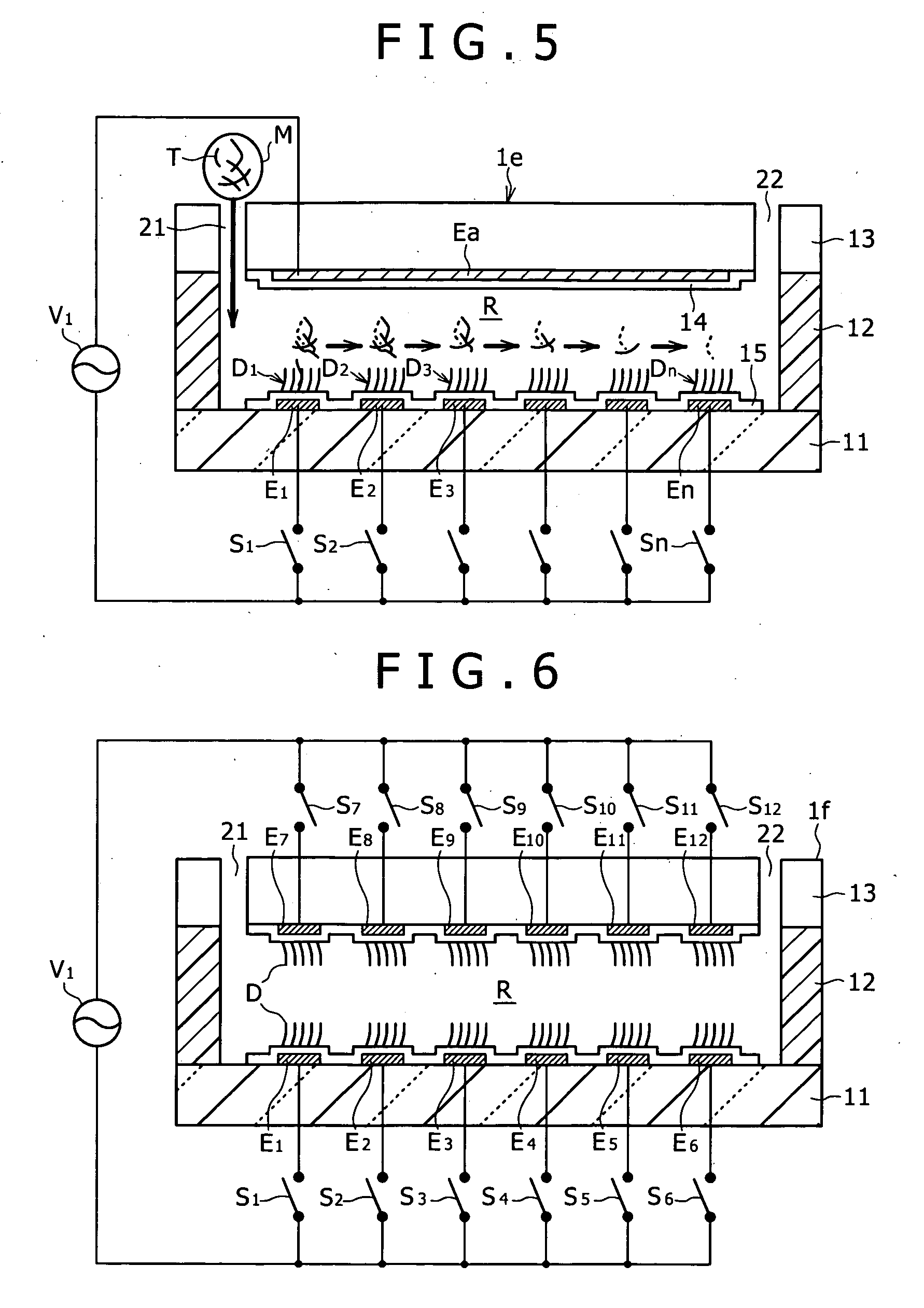Hybridization detecting unit relying on dielectrophoresis, sensor chip provided with the detecting unit, and method for detection of hybridization
a detection unit and dielectrophoresis technology, applied in the field of hybridization detection, can solve the problems of difficult detection difficulty in accurately determining the amount and low probability of target nucleic acids meeting complementary nucleic acids for detection, so as to reduce steric hindrance, reduce mishybridization, and increase the probability of hybridization
- Summary
- Abstract
- Description
- Claims
- Application Information
AI Technical Summary
Benefits of technology
Problems solved by technology
Method used
Image
Examples
first embodiment
[0052] FIGS. 1 to 10 are diagrams illustrating the detecting unit pertaining to the preferred embodiments of the present invention. The substrate structure common to all the embodiments will be described with reference to FIG. 1 which is a vertical sectional view showing the detecting unit according to the present invention.
[0053] The substrate that can be used in the present invention may be formed from the same material as used for optical information recording media, such as CD (Compact Disc), DVD (Digital Versatile Disc), and MD (Mini Disc). In addition, the substrate used in the present invention is not specifically restricted in its shape; it may assume any shape such as disc and rectangle depending on the object of their use.
[0054] The underlying substrate 11 (the lowermost layer) shown in FIG. 1 is formed from transparent silica glass or transparent synthetic resin (such as silicone, polycarbonate, and polystyrene). A synthetic resin capable of injection molding is desirabl...
second embodiment
[0082] The detecting unit according to the present invention will be described below with reference to FIG. 2.
[0083] The detecting unit (indicated by symbol 1b) in FIG. 2 differs in construction from the detecting unit 1a according to the first embodiment such that the fixing sites indicated by symbols F1 tos Fn are not electrodes and the reaction region (R) is provided with opposing electrodes Ex-Ey at its right and left sides (Compare FIG. 1 with FIG. 2).
[0084] The detecting unit 1b produces an electric field that extends from left to right along the fixing sites F1 to Fn when an electric field is applied to the opposing electrodes Ex-Ey. If either of the opposing electrodes is made smaller than the other, an uneven electric field is produced in the vicinity of the smaller electrode (Ey, in this case). Incidentally, symbol Z in FIG. 2 schematically shows the line of electric force due to such an uneven electric field.
[0085] The target nucleic acid T, which is present in a free s...
third embodiment
[0086] The detecting unit according to the present invention will be described below with reference to FIG. 3.
[0087] The detecting unit 1c shown in FIG. 3 is characterized in that it has the opposing electrodes E1-Ea, to En-Ea, which are arranged above and below the reaction region (R), and the opposing electrodes Ex-Ey, which are arranged at right and left of the reaction region (R). The detecting unit 1c is, so to speak, a combination of the detecting unit 1a shown in FIG. 1 and the detecting unit 1b shown in FIG. 2.
[0088] The advantage of the detecting unit 1c is that the target nucleic acid T is moved to the vicinity of the desired position by application of an electric field to the opposing electrodes Ex-Ey and then attracted to the vicinity of the electrodes E1 to En by application of an electric field to the opposing electrodes E1-Ea to En-Ea. Another advantage is that the opposing electrodes Ex-Ey may be used to eliminate any substance detrimental to hybridization and nucle...
PUM
| Property | Measurement | Unit |
|---|---|---|
| electric field | aaaaa | aaaaa |
| electric field | aaaaa | aaaaa |
| insulating | aaaaa | aaaaa |
Abstract
Description
Claims
Application Information
 Login to View More
Login to View More - R&D
- Intellectual Property
- Life Sciences
- Materials
- Tech Scout
- Unparalleled Data Quality
- Higher Quality Content
- 60% Fewer Hallucinations
Browse by: Latest US Patents, China's latest patents, Technical Efficacy Thesaurus, Application Domain, Technology Topic, Popular Technical Reports.
© 2025 PatSnap. All rights reserved.Legal|Privacy policy|Modern Slavery Act Transparency Statement|Sitemap|About US| Contact US: help@patsnap.com



